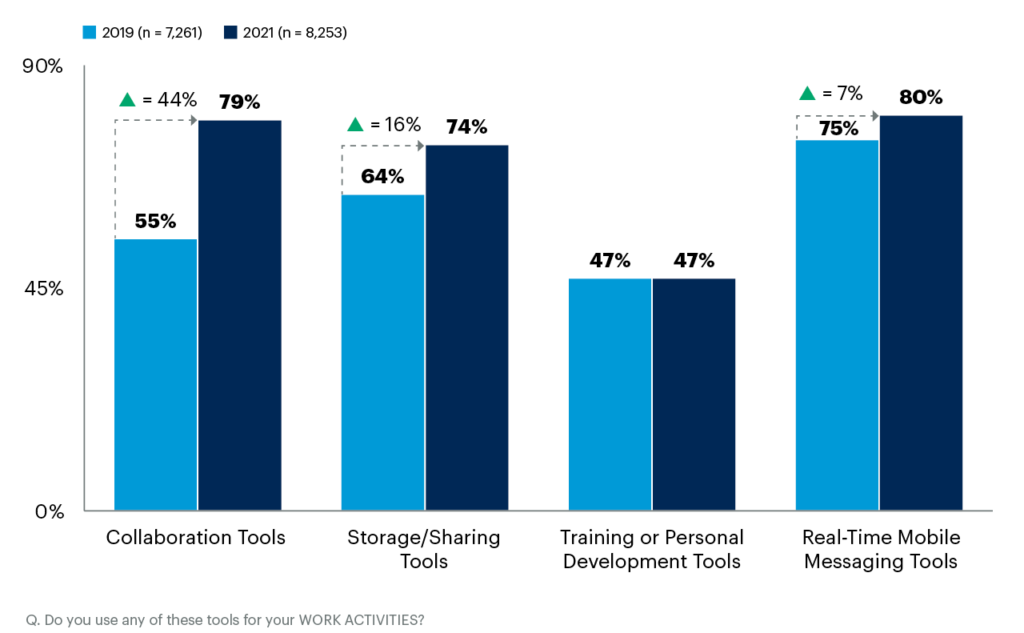The Gartner Digital Worker Experience Survey revealed that nearly 80% of workers are using collaboration tools for work in 2021, up from just over half of workers in 2019. This is an increase of 44% since the pandemic began.

“Collaboration tools found renewed importance during COVID-19 for their role in ensuring the productivity of suddenly remote teams,” said Christopher Trueman, principal research analyst at Gartner.
“As many organizations shift to a long-term hybrid workforce model, cloud-based, personal and team productivity technologies, along with collaboration tools, will form the core of a series of new work hubs that meet the requirements of various remote and hybrid workers.”
Storage/sharing and real-time mobile messaging tools also saw increased use during the pandemic, used by 74% and 80% of 2021 respondents, respectively (see Figure 1).
Figure 1: Changes in digital workplace technology use, 2019-2021 (Percentage of Respondents)

Specifically, the use of meeting solutions surged during the pandemic. While workers globally reported that they spent, on average, 63% of their meeting time in-person in 2019, that number dropped to 33% by 2021 as more meetings took place over audio and video-enabled meeting solutions.
The shift away from in-person meetings is expected to continue. Gartner predicts that by 2024, in-person meetings will drop from 60% of enterprise meetings to 25%, driven by remote work and changing workforce demographics.
Trueman opined that as IT leaders prepare for a mix of meeting modalities, it will be critical that they ensure equitable collaboration, tool and resource access for all meeting participants, regardless of location.
“Cloud-based meeting solutions and content service platforms can support this through offerings or integrations with technologies including virtual whiteboards, rich chat features, and recording and transcription capabilities,” he concluded.





